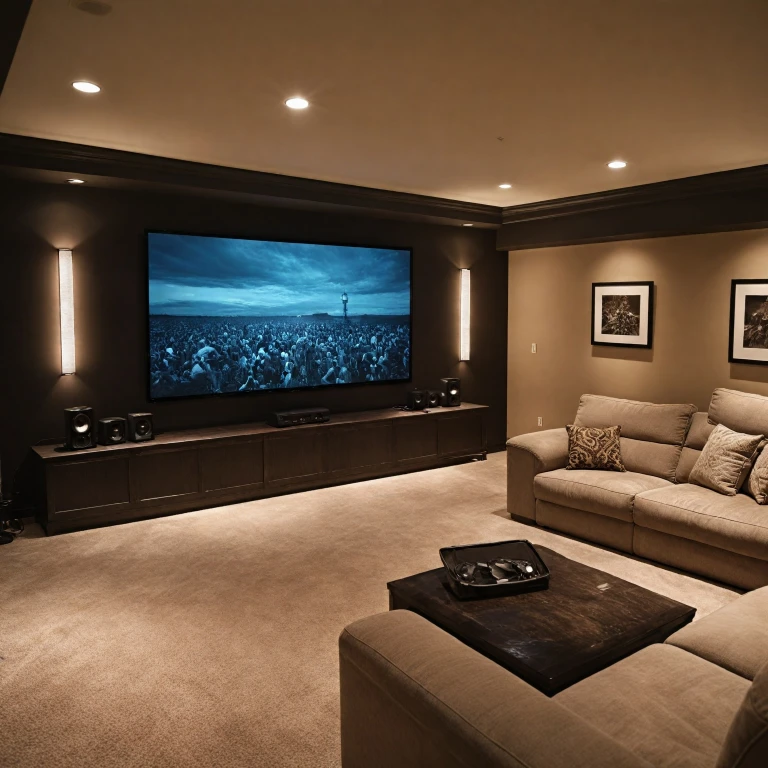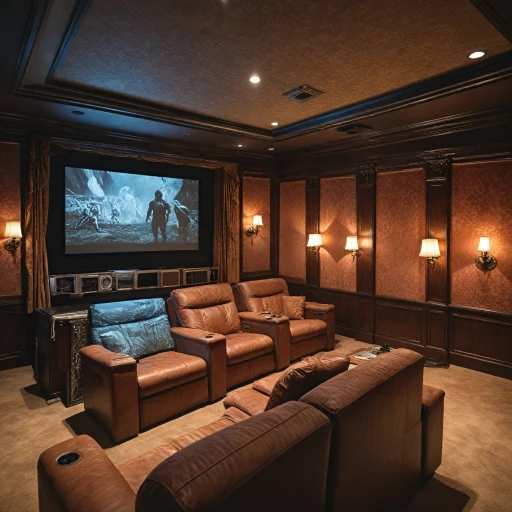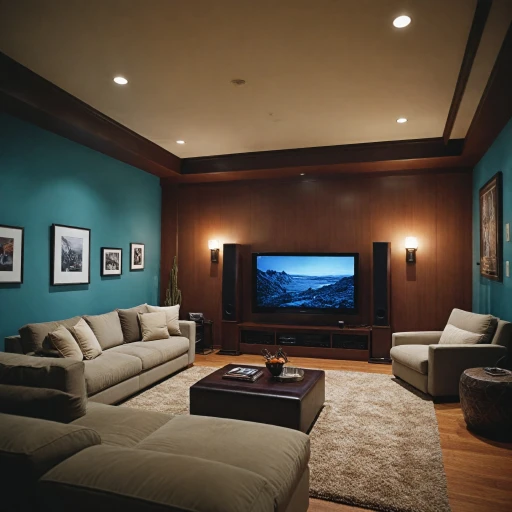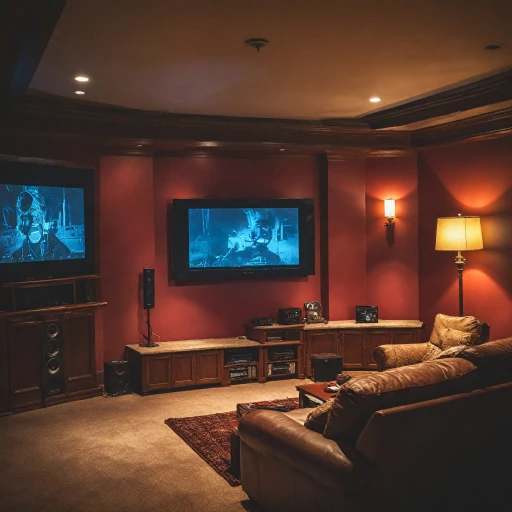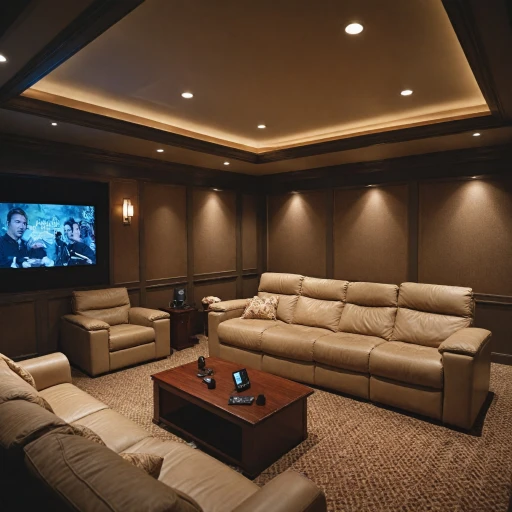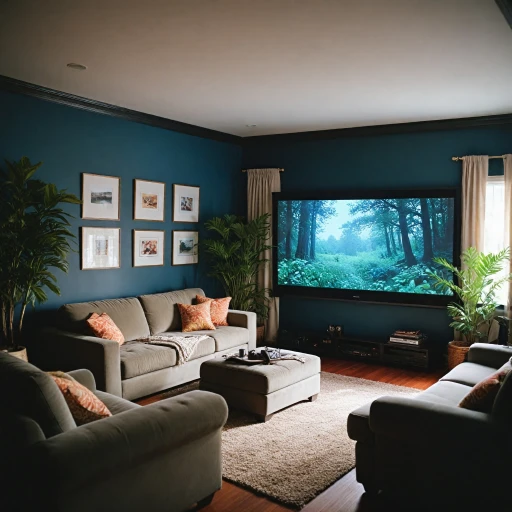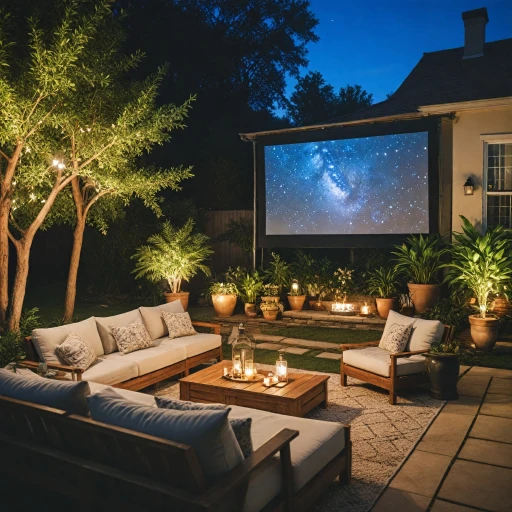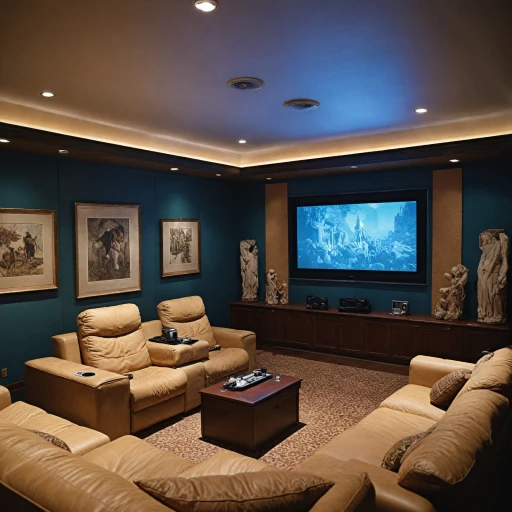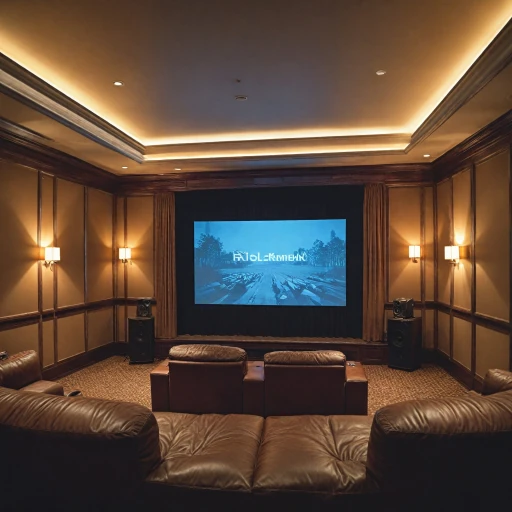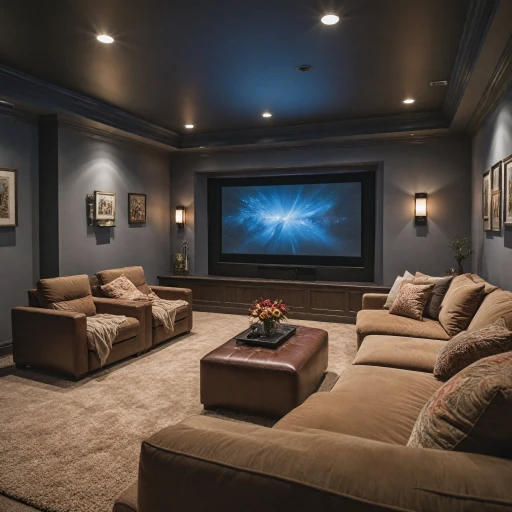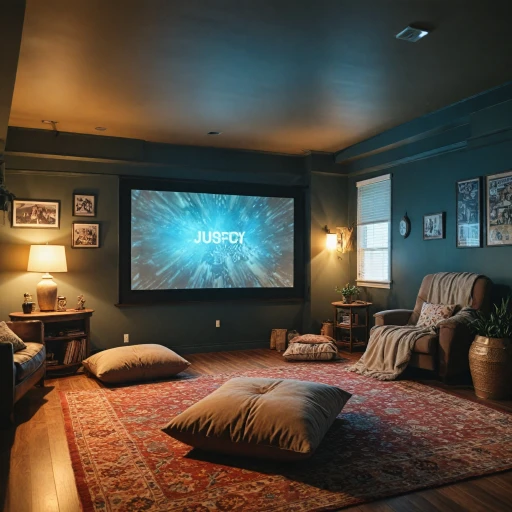
Understanding Atmos Speakers
Delving into the World of Dolby Atmos Technology
When it comes to creating a cinematic experience in your home, understanding the intricacies of Dolby Atmos can make all the difference. Providing a listening experience that mimics the way we naturally hear sound in real life, Atmos offers immersion that traditional audio systems simply can't match. Instead of channel-based surround sound, Dolby Atmos uses objects—individual sound elements that can be precisely placed and moved in a three-dimensional space. This means that audio isn't just around you; it's all around you, creating a captivating and realistic soundscape. For those who prioritize the purest, most authentic audio experience, this innovation might be your best choice. While Atmos speakers, such as the Sonos Arc or Bose Smart Soundbar, are designed specifically to deliver this elevated audio experience, they require an environment that can complement their capabilities. Consider the size and layout of your room to ensure that you can maximize your Atmos system's potential. Moreover, pairing Atmos technology with the right further equipment, like a Dolby Atmos receiver, can optimize the performance of your entire theater setup. For a more in-depth understanding of how Dolby Atmos can transform your audio experience, consider visiting this Dolby Atmos receiver guide. Keep in mind that diving into this advanced audio technology does mean considering the cost and space requirements. While some Atmos-enabled soundbars and ceiling speakers can be expensive, free shipping offers and discounts on unit prices are often available. Balancing your budget and the type of speakers will determine the best investment for enhancing your audio quality at home.Benefits of Atmos Speakers in Home Theaters
Elevate Your Audio Landscape with Immersive Sound
Embracing Atmos speakers in your home theater setup promises a transformative audio experience. What sets these speakers apart from traditional sound sources is their ability to produce 360-degree spatial audio, creating an enveloping and lifelike audio environment.
By integrating Dolby Atmos technology, you unlock a level of detail and clarity previously reserved for professional cinemas. Atmos speakers, such as ceiling speakers and wall-mounted units, are designed to capture and deliver sound from every angle, bringing additional dimensions to your audio experience. This makes it possible to hear raindrops falling from above or footsteps trailing across the screen, enhancing immersion, whether you're enjoying the explosive action of a blockbuster or the subtle cues of your favorite thriller.
Investing in a smart soundbar or a comprehensive surround sound system that supports Dolby Atmos is a savvy choice for audio enthusiasts. These systems often feature multiple speakers or an all-in-one setup like the Sonos Arc, capable of delivering outstanding sound quality. Plus, many products come with features like free shipping and competitive pricing, ensuring you find the best Dolby Atmos setup within your budget.
 Image credit: your-image-description
Image credit: your-image-description
To truly appreciate the nuances of Dolby Atmos technology, consider factors like your room size and ceiling height. These elements play a crucial role in determining the placement and type of Atmos-enabled speakers you'll need, whether it’s adding Atmos soundbars or ceiling speakers to achieve the desired surround effect.
In searching for the best dolby or atmos speakers for your setup, understanding key components such as audio processing capabilities and compatibility with existing systems can lead to a significant upgrade in your home theater experience. If you're keen to dive deeper into integrating and wiring these speakers, explore the importance of speaker wiring cables.
Choosing the Right Atmos Speakers for Your Space
Finding the Perfect Fit for Your Space
Selecting the right Atmos speakers for your home theater system involves multiple factors. Here’s what you need to consider:
- Room Size: The dimensions of your room will significantly influence the type of Atmos speaker setup you'll need. For smaller spaces, compact solutions like an Atmos soundbar may suffice. Brands like Sonos and Bose offer appealing options that combine a smart soundbar with surround capabilities.
- Speaker Type: The choice between floor-standing speakers, wall speakers, or ceiling speakers matters. Ceiling speakers can provide true overhead effects, enhancing the immersive Atmos experience, but they require appropriate installation space and acoustic considerations.
- Budget and Price Point: Price can vary widely among Atmos-enabled speakers. While some options come at a premium unit price for high-end audio performance, there are also choices with more affordable regular prices. Look for sales offering free shipping to maximize value.
- System Compatibility: Ensure your chosen Atmos speakers are compatible with your existing home theater equipment, especially your projector setup. Pairing a Dolby Atmos sound system with a projector capable of Dolby Vision adds to the overall audio-visual experience. It's crucial to match the specifications for the best sound and image credit sync.
- Brand Reputation: Established brands like Dolby, Sonos, and Bose offer a range of Atmos speakers that are widely recognized for delivering high-quality spatial audio and surround sound. Do your research on the brands that offer the best Dolby enabled options.
Incorporating the right Atmos system can elevate your home theater to match professional standards, especially when acoustically matched with a suitable projector for the perfect screen. For insights on choosing the best outdoor projector screens, feel free to explore our dedicated guide.
Integrating Atmos Speakers with Your Projector Setup
Seamlessly Integrating Atmos Speakers into Your Setup
Creating an immersive audio environment in your home theater requires thoughtful integration of Atmos speakers alongside your projector. To enhance the spatial audio experience, a careful balance between speaker placement and system compatibility is key. Choosing a sound system that supports Dolby Atmos is crucial. While soundbars like the Sonos Arc offer a convenient setup, a more traditional approach with individual speakers might better suit a dedicated home theater room. Look for systems with surround sound capabilities and ceiling speakers, as these effectively deliver the three-dimensional sound that Dolby Atmos is known for. When planning your setup, consider the best placement for your speakers. Ceiling speakers can create an overhead sound effect that's essential for the full Atmos experience, while wall speakers help to fill the room with dynamic audio. Free shipping options available online can ease the logistics of gathering your components. Incorporating your speakers with the visual component involves aligning your audio and video technology. Ensure that your projector supports both Dolby Vision and Dolby Atmos for a cohesive sound and image experience. Compatibility between your video and audio systems ensures that the transition from visual to audio effects is seamless, further enhancing your home theater experience. Pairing high-quality atmos soundbars or speakers with your projector might come at a premium price unit, but the best Dolby audio systems will typically offer superior sound quality and improved system longevity. It’s important to remember that while cheaper units might be available, the quality of your audio system will significantly impact your overall theater experience.Installation Tips for Atmos Speakers
Positioning and Placement for Optimal Sound
Ensuring the best possible audio experience from your Atmos speakers requires careful consideration of their placement and positioning in your home theater. Ceiling speakers offer excellent spatial audio, providing an immersive surround sound environment that elevates the viewing experience. Ideally, these should be placed directly overhead or slightly in front of the main seating area to make the most of Dolby Atmos capabilities.Wall and Ceiling Installations
When installing wall speakers, ensure they are at ear level when seated. This positioning helps enhance the audio clarity and surround effect. If you opt for a soundbar, consider models like the Atmos soundbar or Bose Smart soundbar for superior sound quality. Atmos-enabled soundbars are designed to project sound in a way that mimics ceiling speakers, providing a convincing Atmos experience without the need for extensive ceiling installations.Ensuring Proper Connectivity
Using the appropriate cabling and connections is crucial when installing speakers. Proper wiring and choosing the correct unit price options for cables can significantly influence the overall performance and reliability of your system. Make sure you consider the best Dolby and Sonos products that offer compatibility with your setup. Ensure your system supports Dolby Vision if you want the best integration with your projector.Pairing with Other Audio Components
Your sound system can benefit from combining different audio components. Surround speakers can work alongside your paired Atmos speakers to create an extensive audio field. If you include components like a Sonos Arc or other smart soundbars, they should complement the main speakers. This configuration will help provide dynamic audio, especially in larger rooms. Opt for ceiling or wall setups that fit your theater's design and layout for the best effects. Remember, each theater room is unique, and achieving the perfect sound might require tweaking your speaker placements and configurations. Keep adjusting until you find the ideal balance, and you'll significantly enhance your home theater experience.Troubleshooting Common Issues with Atmos Speakers
Handling Atmos Speakers Issues with Ease
Dealing with problems related to your Atmos speakers can be quite a hurdle, especially when they’re part of a sophisticated home theater setup. Understanding the nuances of Atmos technology and following a systematic approach can help mitigate most issues related to audio, speaker placement, and connectivity.- Audio Distortions and Dropouts: If you’re experiencing audio dropouts or distortions, the first checkpoint is to inspect all your cable connections. Ensure that both your Atmos speakers and audio sources are securely connected. Utilizing high-quality HDMI cables rated for Dolby Atmos and 4K can greatly enhance audio fidelity and solve most distortion issues.
- Incorrect Speaker Placement: One common pitfall is placing speakers incorrectly. Check if your speakers are positioned as per the recommended setup guidelines; ceiling or wall mount configurations should align with the Dolby Atmos requirements for optimal surround sound experience. Misplaced units may result in uneven sound distribution.
- Compatibility Issues: Sometimes, incompatibility between devices can lead to Atmos speakers not functioning as expected. Make sure all components, including your projector and any soundbars like the Sonos Arc or Bose Smart models, are compatible with Dolby Atmos for seamless operation.
- Configuration Settings: Delve into the audio settings of your home theater system. It’s imperative that every unit in your setup is configured to output in Dolby Atmos where available, and isn't defaulting to standard surround sound modes.
- Software Updates: Check for firmware updates for both your speaker system and any connected audio devices. Manufacturers often release updates to fix bugs or improve compatibility, which can lead to enhanced performance.
- Budget Constraints and the Price Factor: While troubleshooting, it’s helpful to weigh the cost of further investments against expected enhancements in audio quality. Sometimes, opting for a premium unit at a higher price might offer benefits like free shipping or added features that can enhance your theater experience.
- Seeking Professional Assistance: If self-troubleshooting doesn’t resolve the issue, professional help might be necessary. Consider reaching out to certified home theater installers who are familiar with atmos-enabled and spatial audio systems.
